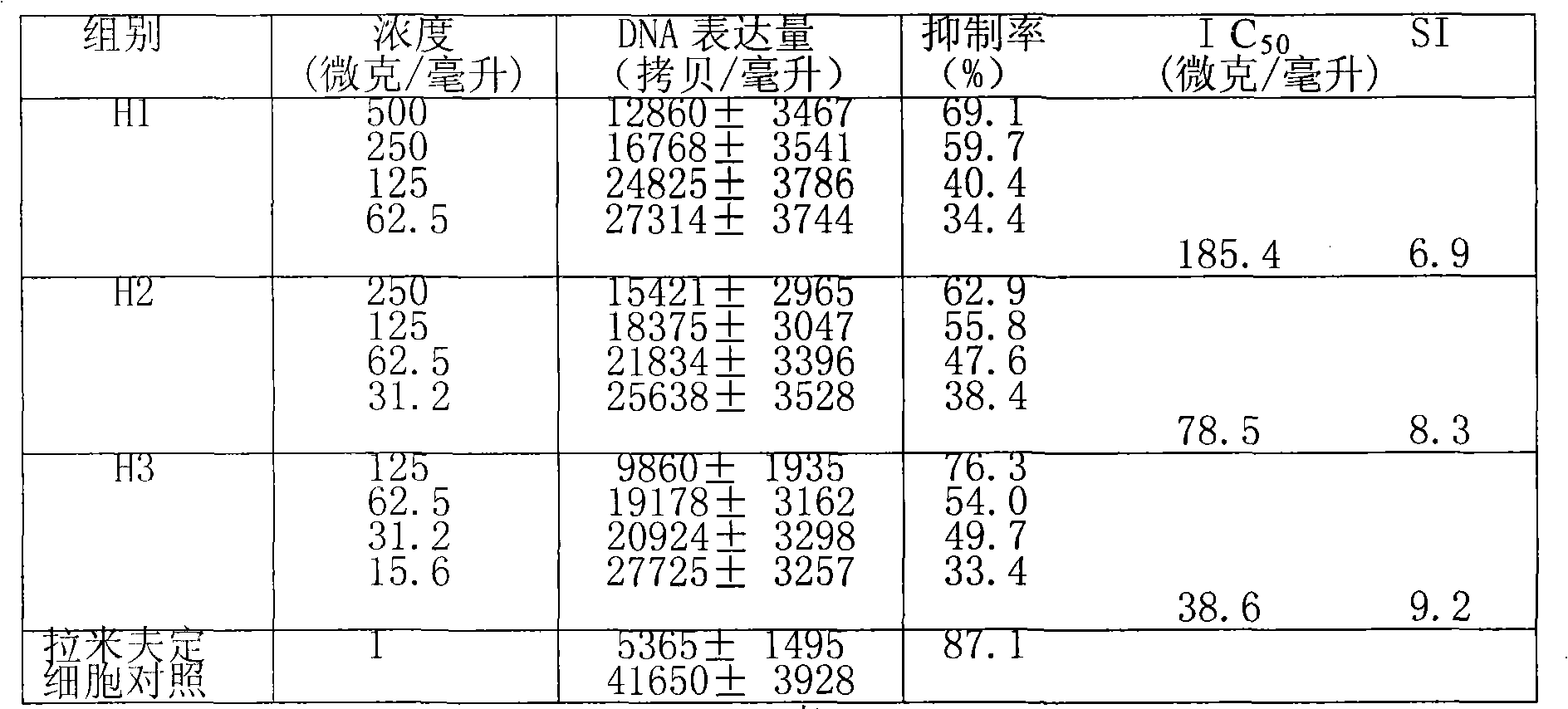Artemisia scoparia extractive and production method and applications thereof
A production method and extract technology, applied in artemisia marina extract and its production method and application field, can solve the problem that flavonoid components have not been officially reported, and achieve low pathogenicity, high morbidity, and strong infectivity Effect
- Summary
- Abstract
- Description
- Claims
- Application Information
AI Technical Summary
Problems solved by technology
Method used
Image
Examples
Embodiment 1
[0044] Example 1: add 8 to 10 times the amount of water to the aboveground part of Artemisia fragrans, boil and extract twice at 80°C to 100°C, each time for 2 hours to 3 hours, filter, combine the filtrates, and concentrate to one-third of the original volume , add 1 to 2 times the volume of the concentrated solution of absolute ethanol and place it for precipitation for 12 hours, filter the precipitate, adjust the pH value to 3 to 6 with dilute hydrochloric acid after the filtrate is concentrated, and put it on the AB-8 macroporous resin chromatography column , after all the sample solution is absorbed, rinse the column with 3 to 8 column volumes of deionized water, and then perform gradient elution with 50%, 70%, and 90% ethanol, and the amount of ethanol per concentration is 3 to 8. 8 chromatographic column volumes, the flow rate is 2 to 5 chromatographic column volumes per hour, collect the ethanol eluent, combine and concentrate at 60°C to 90°C, and then dry the concentra...
Embodiment 2
[0045] Example 2: Add 8 to 10 times the amount of water to the aboveground part of Artemisia marina, boil and extract twice at 80°C to 100°C, each time for 2 hours to 3 hours, filter, combine the filtrates, and concentrate to one-third of the original volume , add 1 to 2 times the volume of the concentrated solution of absolute ethanol and place it for precipitation for 12 hours, filter the precipitate, adjust the pH value to 3 to 6 with dilute hydrochloric acid after the filtrate is concentrated, and put it on the AB-8 macroporous resin chromatography column , after all the sample solution is absorbed, rinse the column with 3 to 8 column volumes of deionized water, and then perform gradient elution with 30%, 50%, and 70% ethanol, and the amount of ethanol per concentration is 3 to 8. 8 chromatographic column volumes, the flow rate is 2 to 5 chromatographic column volumes per hour, collect the ethanol eluent, combine and concentrate at 60°C to 90°C, and then dry the concentrate...
Embodiment 3
[0046] Example 3: add 8 to 10 times the amount of water to the aerial parts of Artemisia marina, boil and extract twice at 100°C, each time for 2 hours to 3 hours, filter, combine the filtrates, concentrate to one-third of the original volume, and add the concentrate 1 to 2 times the volume of absolute ethanol was left to settle for 12 hours, filtered to remove the precipitate, and the filtrate was concentrated and adjusted to a pH value of 3 to 6 with dilute hydrochloric acid, put on an AB-8 macroporous resin chromatography column, and waited for sample loading After the solution is completely absorbed, wash the column with 3 to 8 column volumes of deionized water, and then perform gradient elution with 10%, 30%, and 50% ethanol. The amount of ethanol per concentration is 3 to 8 column volumes. The column volume and the flow rate are 2 chromatographic column volumes per hour. The ethanol eluents are collected, combined and concentrated at 60°C to 90°C, and the concentrated sol...
PUM
 Login to View More
Login to View More Abstract
Description
Claims
Application Information
 Login to View More
Login to View More - R&D
- Intellectual Property
- Life Sciences
- Materials
- Tech Scout
- Unparalleled Data Quality
- Higher Quality Content
- 60% Fewer Hallucinations
Browse by: Latest US Patents, China's latest patents, Technical Efficacy Thesaurus, Application Domain, Technology Topic, Popular Technical Reports.
© 2025 PatSnap. All rights reserved.Legal|Privacy policy|Modern Slavery Act Transparency Statement|Sitemap|About US| Contact US: help@patsnap.com


